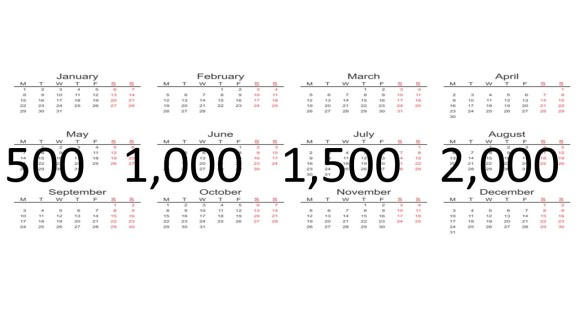 This is what I sometimes call the Silly Season – where people report their annual mileage (and elevation) as if it matters. It doesn’t. Volume does certainly matter – running 2,000 miles/year will likely make you a better runner than running only 1,000 miles, all else being equal. However, it depends on how you get there. Miles/elevation are a means to an end, not an end unto themselves. It’s what those totals are made up of that matters more than the totals themselves.
This is what I sometimes call the Silly Season – where people report their annual mileage (and elevation) as if it matters. It doesn’t. Volume does certainly matter – running 2,000 miles/year will likely make you a better runner than running only 1,000 miles, all else being equal. However, it depends on how you get there. Miles/elevation are a means to an end, not an end unto themselves. It’s what those totals are made up of that matters more than the totals themselves.
Mileage totals should be a byproduct of your training. Train to get faster, you’re A races, your time goals. Let the miles accumulate naturally, a byproduct of a sensible training program.
Here are some principles to guide you, and things to be aware of when tracking miles:
- Increase your volume, and intensity, gradually. Don’t rush to meet mileage targets if your body isn’t ready.
- Stress is cumulative. Pushing yourself far and/or hard may feel good for a while, but repetitive overstress and under rest will lead to injury and illness.
- Include variety, in speed and terrain. Don’t pad your totals with easy, flat miles, when what you need is speed and/or hills. Total heart beats might be a better measure of training volume/stress (don’t rely on any single measure).
- Include breaks and downtime in your training. It’s important to include some off or low stress time within a training cycle to let your body catch up, and between cycles to better recover before ramping it back up again. Don’t neglect important down time to meet mileage goals. Remember, stress is cumulative.
- Listen to your body. When you’re sick, beginning to feel a potential injury coming on, stressed, fatigued, hit a plateau, etc., back off to let your body recover and refresh, rather than pushing through to hit mileage targets.
- Don’t add an extra run, or a few extra miles, just to meet an artificial mileage target. Run them only if they value to your speed and endurance, without overly risking illness and injury. Use mileage targets to motivate you – to get you out the door when you’re feeling lazy – but don’t become slaves to them.
If you have 2018 mileage goals, write them down, then put them away and don’t think about them again until the end of the year. After your race and time goals are past, and after some recovery/down time, then go back and look at your annual goal. See if you’re within reach of your goal, or any milestones. Within reach means it’s OK to push yourself a bit, but don’t overextend yourself to the point where you risk injury, continued improvement, burn out, and your next years’ goals.
The mileage, and components thereof, are a means to an end, and should not be an end unto itself.
Train smart. Run happy. See you on the trails.
Adam
